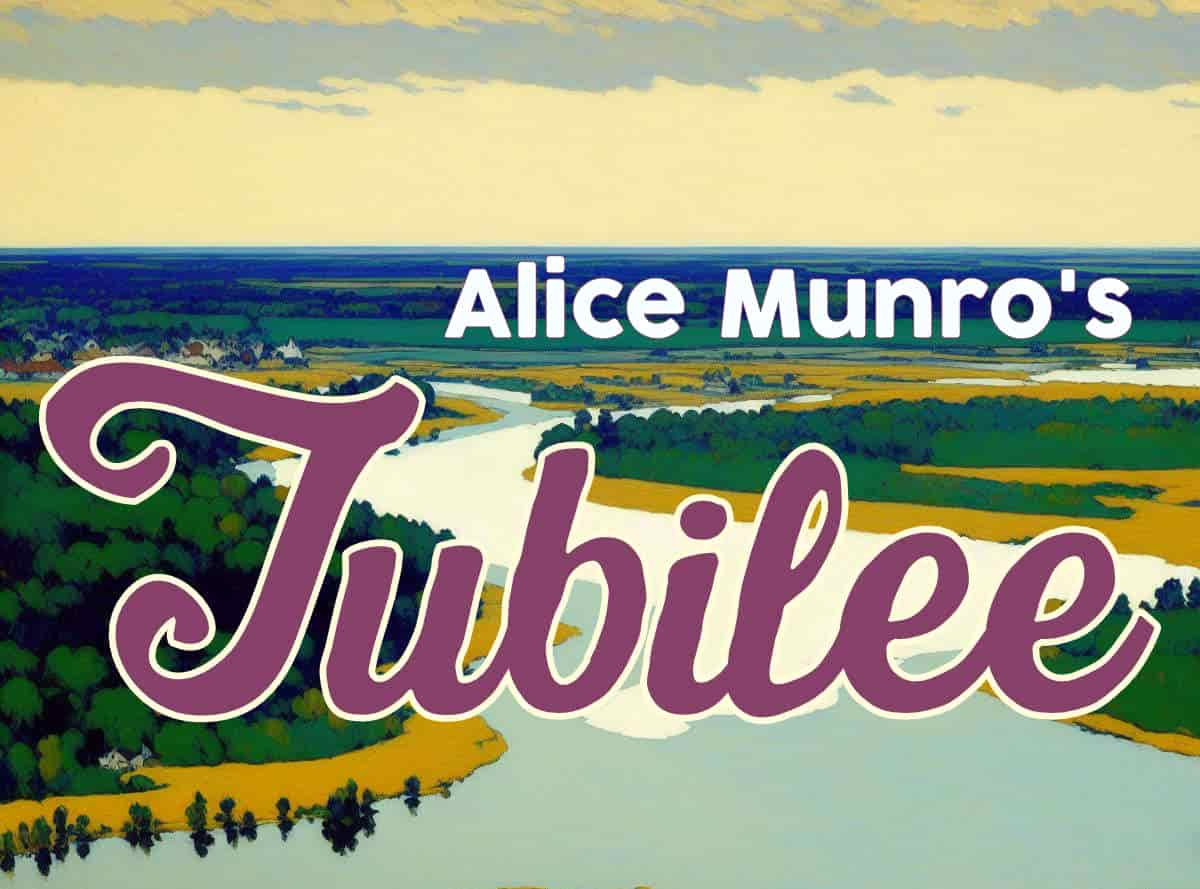**UPDATE LATE 2024**
After Alice Munro died, we learned about the real ‘open secrets’ (not so open to those of us not in the loop) which dominated the author’s life. We must now find a way to live with the reality that Munro’s work reads very differently after knowing certain decisions she made when faced with a moral dilemma.
For more information:
My stepfather sexually abused me when I was a child. My mother, Alice Munro, chose to stay with him from the Toronto Star
Before Alice Munro’s husband sexually abused his stepdaughter, he targeted another 9-year-old girl. ‘It was a textbook case of grooming’ from the Toronto Star
So, now what?
Various authors on CBC talk about what to do with the work of Alice Munro
And here is a brilliant, nuanced article by author Brandon Taylor at his Substack: what i’m doing about alice munro: why i hate art monster discourse
Jubilee is a fictional small town in southern rural Ontario created by Canadian short story author, Alice Munro. Jubilee has similarities to Wingham, where Munro grew up, and also to Clinton, where Alice Munro settled with her second husband.
In Munro’s later collections, Who Do You Think You Are? and Open Secrets, this autobiographical town is recapitulated as the small towns of Hanratty and Carstairs.
Alice Munro introduced Jubilee in her 1968 collection (Dance of the Happy Shades). Jubilee is mentioned in “Boys and Girls“, “The Peace of Utrecht” and “Postcard“. She returns to Jubilee in her 1971 collection, Lives of Girls and Women. Jubilee is expanded as the home town of aspiring writer Del Jordan.
What do we know about Jubilee from the texts?
Jubilee is in Wawanosh County, Ontario, Canada. (Munro spells it Wawanash.)This landscape is evoked so well that the rural countryside of Ontario beyond Toronto is these days frequently known as Alice Munro Country. (As someone from New Zealand I’m familiar with the phenomenon, due to Peter Jackson’s Lord of the Rings.)
The town is relatively large, servicing a large area. Even in the 1940s it has traffic lights. Jubilee is visible from The No. 4 Highway, which is also the main street.
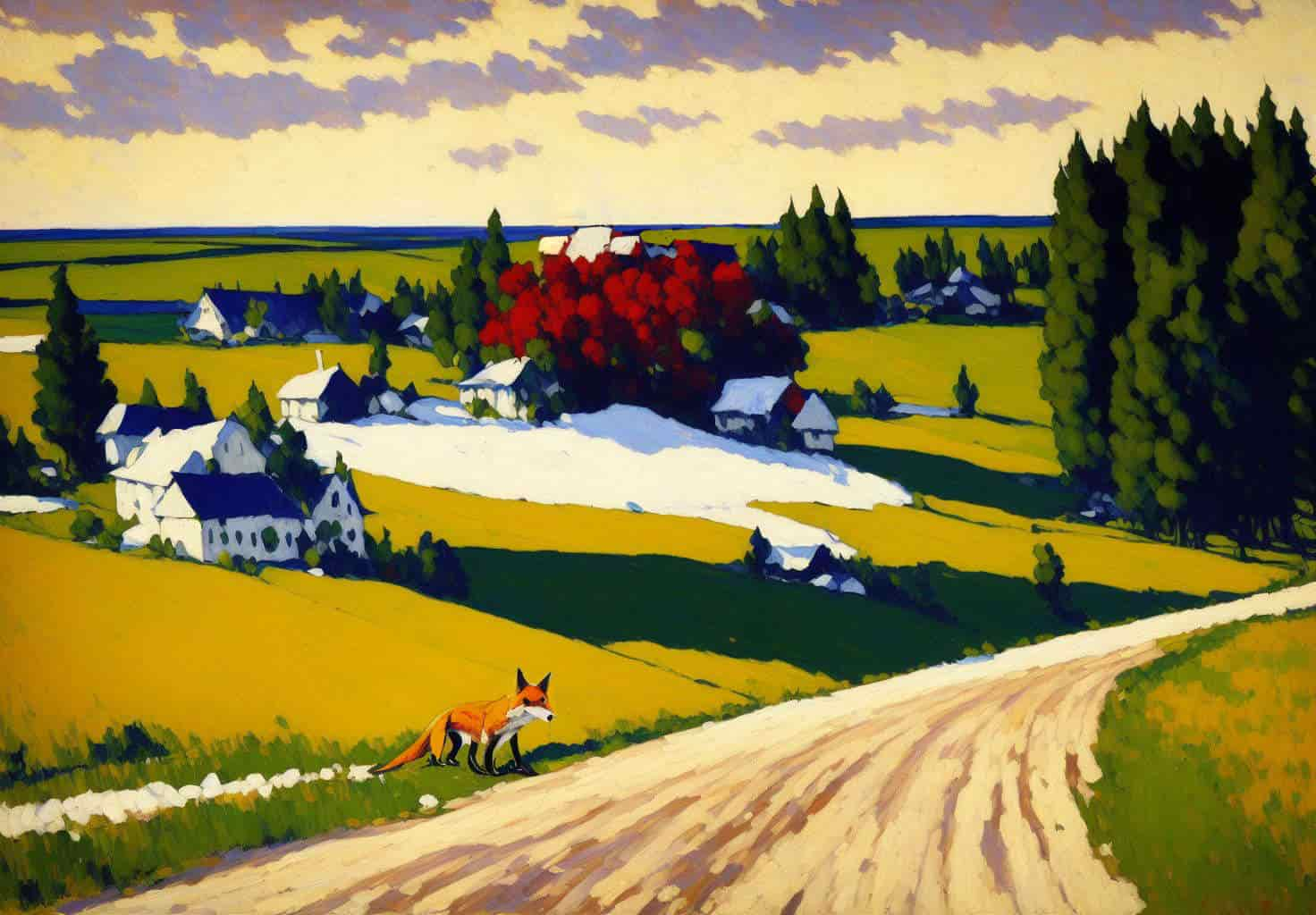
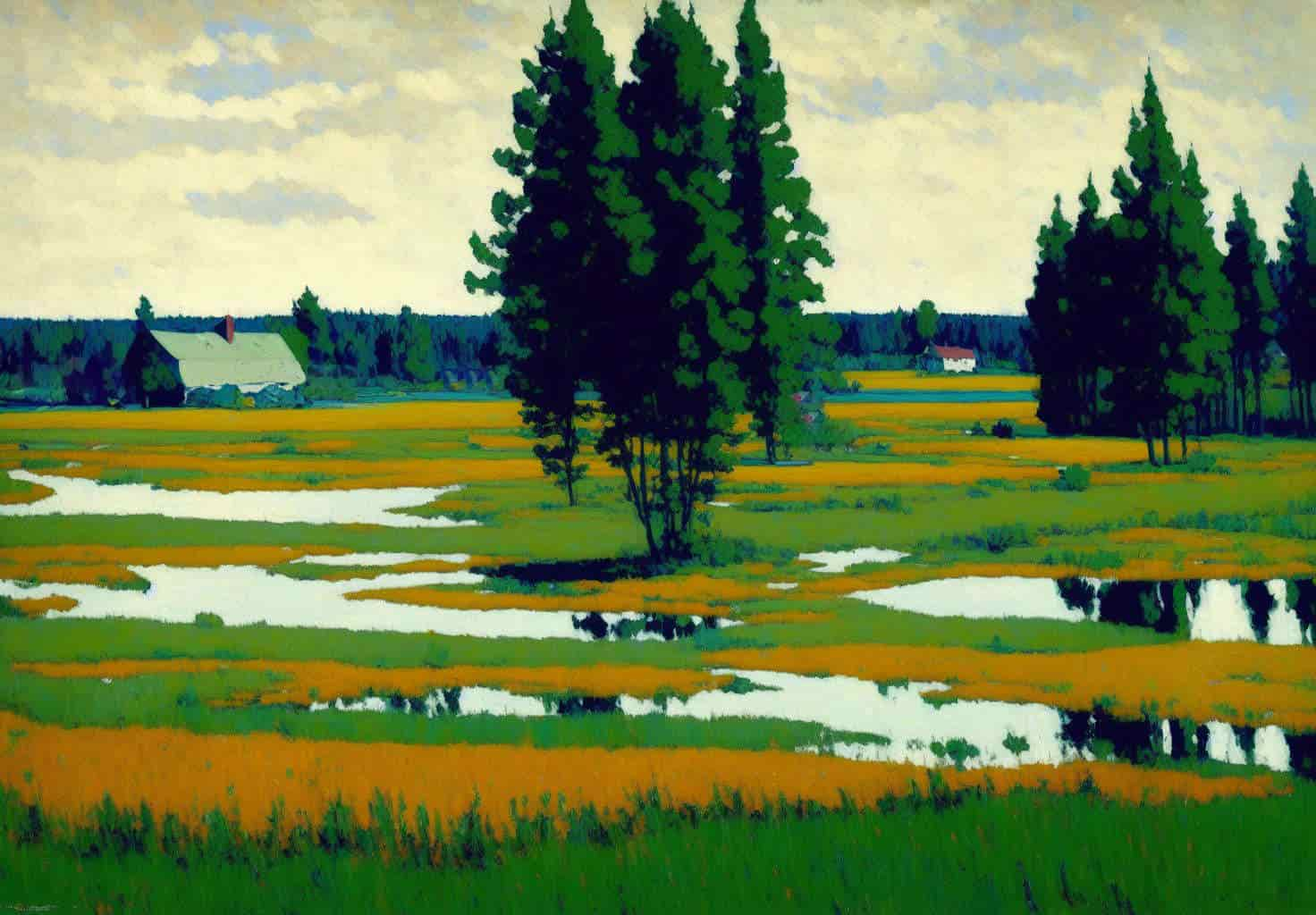
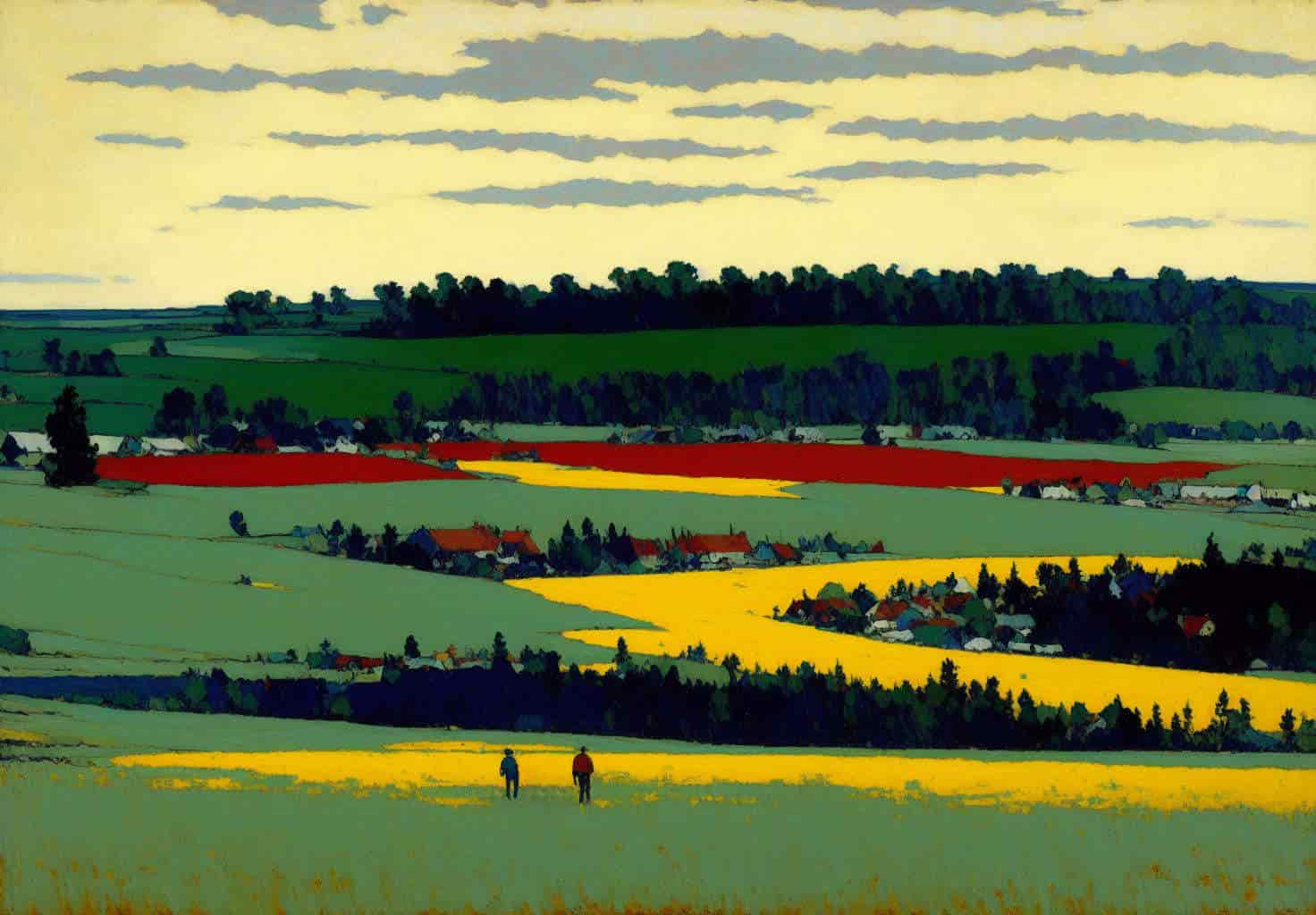
NEAREST TOWNS AND LANDMARKS
- “There is no easy way to get to Jubilee from anywhere on earth.” From Toronto (in the 1960s) it’s a 25,000 mile car trip.
- There’s a place known as the Lake about thirty miles west of town (near Inverhuron, which is a real place). Young people hold parties at this lake.
- There’s a whorehouse called Mrs. McQuade’s. Mitch Plim’s wife used to work there when younger. (Mitch Plim is one of the town’s 1930s bootleggers.)
- Places called Porterfield and Blue River are close enough for the various Anglican churches to share their young minister.
- Tuppertown is nearby, which is where you go once you need a nursing home. Tuppertown is a fictional version of the real town of Goderich. Sometimes Goderich appears in Munro’s fiction as Walley, Tiplady, Wawanosh, or Mock Hill.
[Starting] in “Images”, the Maitland River is turned into the Wawanash River, spelt with an “a” instead of the usual “o” – “Wawanosh” – as in the Ojibway Chief’s name. Despite the slightly anglicised form, which allows Wawanash to better rhyme with “wash”, the name still “sounds Indian”.
“When the Indians were there”: memory and forgetfulness in Alice Munro’s Dance of the Happy Shades
- There’s also a township called Grantly nearby.
- Del’s father’s family have an old house in Fairmile Township, specifically at a place called Jenkin’s Bend.
- In “The Found Boat” we learn how each spring the river overflows its banks.
Some springs, say one every five, it covered the roads on that side of town and washed over the fields, creating a shallow choppy lake. Light reflected off the water made everything bright and cold, as it is in a lakeside town, and woke or revived in people certain vague hopes of disaster.
“The Found Boat”
PLACE NAMES
In most cases, Anglophone names were even attributed to pre-existing centres, or natural sites like lakes, rivers, mountains, obliterating their original names in the attempt to erase the indigenous history, culture and identity. The visible legacy of this imperialist policy can be seen through the eyes of the narrator of “Princess Ida”, one of the stories of Munro’s Lives of Girls and Women : “River Street, Mason Street, John Street, Victoria Street, Huron Street, and strangely, Khartoum Street”
Negotiation of Naming in Alice Munro’s “Meneseteung” by Sabrina Francesconi
In “The Found Boat” we have Burns Street (in a story about a flood).
Also in “The Found Boat” we learn there’s a five-yearly flood which inundates the ends of Bell Street, McKay Street and Mayo Street. The town is equipped with a standpipe — rigid vertical pipes which fire hoses can be connected to, and are used for drawing water from the local supply mains. They’re designed to hold back floodwaters.
CLIMATE
- In summer it gets very hot.
- In winter it gets very cold. “The rhythm of life in Jubilee is primitively seasonal. Deaths occur in the winter; marriages are celebrated in the summer. There is good reason for this; the winters are long and full of hardship and the old and weak cannot always get through them.”
- In the 1960s, every 10-12 years winters are particularly harsh, breaking up the pavement in the main street.
FLORA AND FAUNA OF JUBILEE
- The trees have massive roots.
- Willows and willow bushes line the banks of the river.
- You can get to the edge of the river in the patches which have been cow trampled.
PEOPLE AND SOCIAL CUSTOMS
- Wealthy people escape to Florida for the worst of winter, which is actually the tail-end, dragging on and on
- The MacQuarries are a wealthy family who live in a mansion with stained glass windows.
- If you’re poor and/or disenfranchised, you live out on Flats Road.
- Two intellectually disabled people live on Flats Road. One is a man who lives with his clock and watchmaker brother in the building beside Buckles’. The other is a woman called Irene Pollox, a scary woman who chases children and behaves erratically, as if drunk. With unpredictable behaviour, Irene has a local rhyme about her. She is Jubilee’s witch. (Irene Pollox may have Griscelli syndrome.)
- Locals in Jubilee speak with a ‘harsh twang’ compared to residents from larger cities.
- By the 1960s, many of the young people are modernized, wearing modern fashions and hairstyles. Women are drinking recreationally.
- The school is called Jubilee Public School. Alma Stonehouse is one of the teachers. Mrs Grace Beecher is another.
- There are five churches in town. Four of them are small and poor, including the Catholic church which is considered by most ‘extreme’. “White and wooden, with a plain mission cross, it stood on a hill at the north end of town and dispensed peculiar services to Catholics, who seemed bizarre and secretive as Hindus, with their idols and confessions and black spots on Ash Wednesday.” Most of the Jubilee Catholics are Irish.
- Located not far from River Street, the Baptist church is also considered ‘extreme’. The Baptist Mission Band congregate in the basement of their church, singing songs such as “There’s a New Name Written Down in Glory, And it’s Mine, Mine, Mine!” The Baptists are expected to lead austere lives (no make-up, no dancing, no movies etc.) but their hymns are “loud, rollicking and optimistic”. The building is “modest, but modern and hideous, being built of gray cement blocks, with pebbled glass windows”.
- The Presbyterian mostly comprises elderly people who refused to become United, They campaign against hockey practice on Sundays and sing psalms.
- Then there are the Anglicans. Nobody says much about this one. There is “a remnant of the old Family Compact, or some sort of military or social establishment” keeps it going. Aside from the family’s butcher, attendees are all in late middle age. The minister is shared with churches at Porterfield and Blue River. This is the only church in town with a bell and a storm porch set up outside the main door to keep the wind out. Inside there is no furnace, just a domestic space heater. The wooden boards are unvarnished. But no one talks much of what goes on at the Anglican church. It’s not a fashionable religion in Jubilee.
- Finally, the United Church is the most modern, largest and most prosperous church in Jubilee. During the war, the minister is Mr. McLaughlin. “It had taken in all the former Methodists and Congregationalists and a good chunk of the Presbyterians (that was what my father’s family had been) at the time of the Church Union. This church attracts the professionals in the town (doctors, lawyers, merchants and so on). The pews are made of glossy golden oak and “placed in a democratic fan-shaped sort of fan.” There are organ pipes instead of an altar. Stained-glass windows show Christ performing “useful miracles” or parables. Wine (actually grape juice) is passed around like refreshments. The Legion and Lions Club attend this church uniformed on significant occasions.
- The Lions Club wear purple-tasselled hats on formal occasions.
- Kinmen’s Fair has a merry-go-round which lets mentally disabled people (Irene Pollox and Frankie Hall) ride for free.
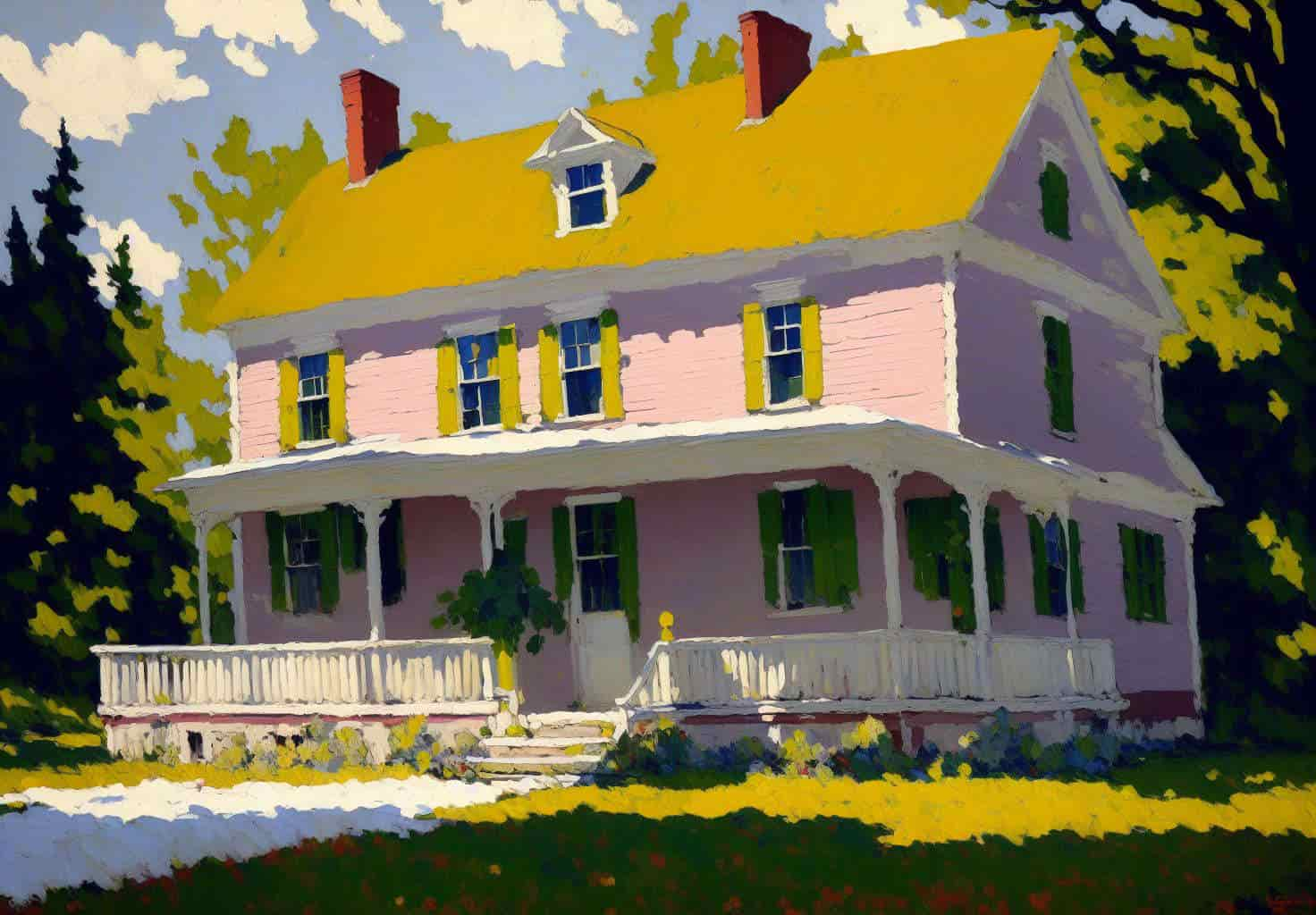
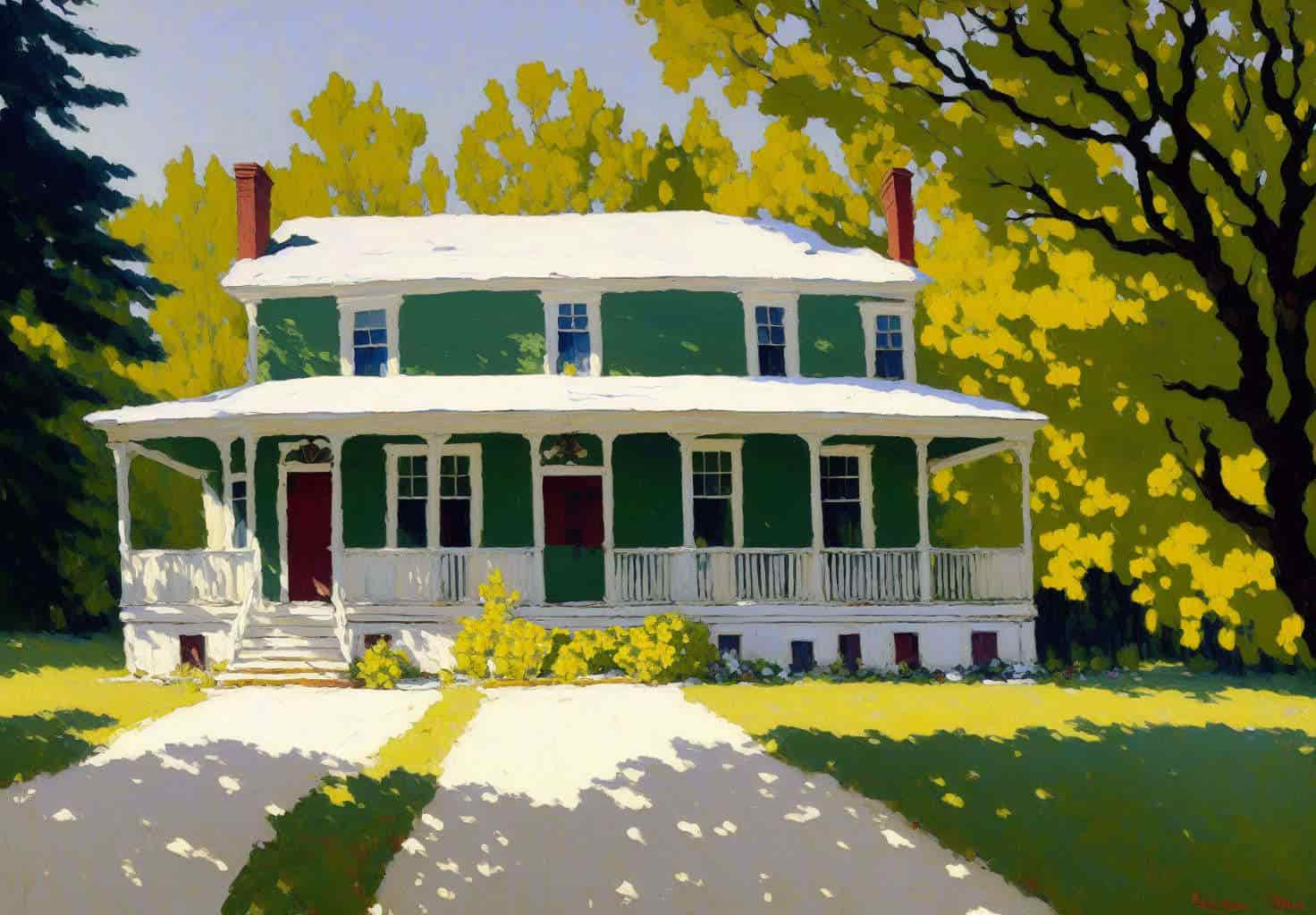
JUBILEE TOWN CENTRE
- The town spreads almost equidistantly on either side of the main street. When approaching by car at night, the town will be lit up and vaguely resemble the shape of a bat with one wing lifted slightly, bearing the water tower, unlighted, indistinct, on its tip. (See: How Water Towers Work at Practical Engineering on YouTube.)
- There’s a “gaudy, peeling cupola” which is the town hall, which is an architectural sore thumb as everything else is “squarely-built, dingy grey-and-red-brick architecture”. The cupola is “exotic”. Apparently this bell is run for wars starting and ending, and also ready to ring in case of earthquake, or final flood.
- “Underneath [the town hall cupola] hangs a great bell, to be rung in the event of some mythical disaster.” (Here’s the town hall cupola of Wingham.)
- There’s a Queen’s Hotel on main street. It has a coffee shop.
- There’s a department store called King’s (where Helen of “Postcard” works, while foolishly waiting for marriage). Despite the name, suggesting many goods are available, the ‘department store’ is really just ready-to-wear and dry goods. The children’s department is upstairs. By the late 1960s they no longer sell groceries. The sale of groceries ended when the original owner died, Mr King. The store was subsequently owned by someone called Mr Kruberg, and run by a man called Mr Hawes, the manager. Munro has created a typical 20th century trajectory of smalltown retail in her creation of King’s Department Store, as small grocers who knew everyone in town went out of business due to the advent of supermarkets.
- The post office is a square, useful, matter-of-fact building with a clock tower.
- Regional residents hire a post box which they check using their own key. Newspapers are also delivered to the post box, so they need checking daily.
- On main street there is a well-utilised drinking fountain.
- Neon signage lights up the BILLIARDS establishment and the CAFE in blue and red and orange.
- At half-past ten at night a bus goes through the town without slowing down much
- The main street in the centre of Jubilee is surrounded by “quiet, decaying side streets where old maids live, and have birdbaths and blue delphiniums in their gardens”.
- The CNR Station (Canadian National Railway, now CN) is not far from River Street.
- During wartime, women shop at Krall’s Ladies’ Wear, with pale, gauzy dresses in the window.
- If you want a caged canaray you’ll find one at the Selrite store.
- Jubilee has a library.
- See movies at the Lyceum Theatre.
- The grocery store is known as the “Red Front Grocery”.
NATURAL SITES AROUND JUBILEE
- A golden, marshy river almost encircles the town
- This is called The Wawanash River, which in the short story “Meneseteung” has been renamed. People fish there (for black bass, chub, redfin). Children catch frogs for bait. The riverbank is muddy at certain times of year. Willow trees line the banks.
- There’s a place called Dunnock Swamp where you’ll get your car bogged if you’re not careful.
- There’s also a place along the river called Grenoch Swamp. Apparently there’s a quicksand hole in it. An eccentric called Benny has a hoarded-up old house nearby. You’ll likely find Benny fishing, or tending to his many animals. He was very temporarily married.
- Sullivan’s Hill is a good place for young lovers to park.
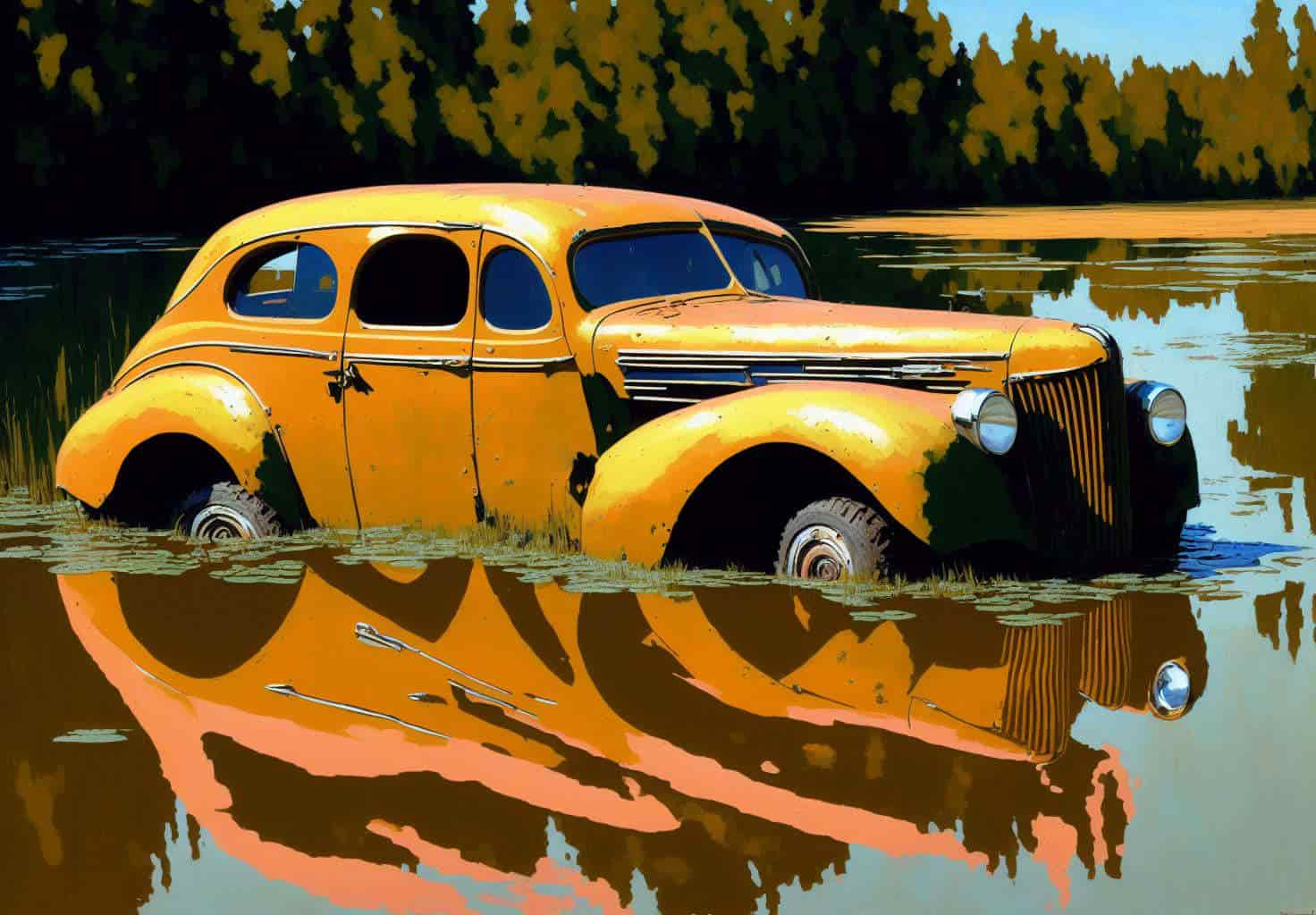
MEDIA
- Jubilee has its own radio station, which for six months had a 24-year-old radio announcer by the name of Ted Forgie. On Sundays it broadcasts sermons of the United Church.
- By the 1960s, the local Jubilee newspaper is called the Bugle-Herald, which at the beginning of WW2 was called the Herald-Advance. There’s also a ‘city newspaper’ at this time, which people in Jubilee receive a day late. The Family Herald and the Saturday Evening Post are also available, as well as a newspaper which only runs salacious headlines and nothing true.
- Men might sit by the radio and listen to Boston Blackie or Police Patrol, like Del’s Uncle Bob Oliphant, who married her Aunt Moira.
THE POOR END OF TOWN
- Poor people leave near the swamp and the river.
- Flats Road is wide and meandering. It’s neither town nor rural, cut off from the town of Jubilee by the curve of the river and the Grenoch Swamp. But it doesn’t count as rural because there are no proper farms. Flats Road is the liminal space between civilisation and wilderness.
- If you travel west from town along Flats Road you’ll be reassured with sights such as sidewalks, street lights, line-up shade trees, milkmen’s and icemen’s carts, birdbaths, flower borders, and verandas with wicker chairs from which old ladies watch the street. But once you get to Buckles’ store, you’ve reached the edge of civilisation. Now you’ll find fields ragged with weeds, yellow with dandelions, wild mustard or goldenrod, depending on the time of year. In this part of town, houses are more run-down. Residents have less money, and the houses appear more eccentric, less alike. The space between each house is larger.
- Buckles’ Store is a rickety, run-down store at the edge of town which existed in the 1930s. The building is built like the building on the main street of a Wild West town in an old Western movie. (Presumably) before King’s puts them out of business, Buckles’ sells grocery basics. (King’s is subsequently purchased by a corporation.)
- Though there are no sizeable farms at the bum end of town, the Potters raise sheep and there’s also a fox farm raising silver foxes. (Del Jordan’s family, the main character of the stories in Lives of Girls and Women.) The Potter boys keep goats which are turned loose to graze the side of the road. Because these are the ‘hobby farms’ of poor people, you often seen unusual collections of animals together, like the panoptic narrative illustrations in a collection of Bible stories.
- Somewhere nearby there is a mental hospital, known as the ‘asylum’.
CRIME
- There have been occasional murders in Jubilee, but not the remarkable kind.
- In the 1930s, Jubilee is a dry town, so if you want to drink you must buy alcohol illegally. (Or go to another town like Porterfield, which isn’t dry.)
- If you want bootleg liquor, you go to Flats Road to a choice of two houses: Mitch Plim or the Potter boys (who keep goats).
The Liquor Control Act of 1927 allowed for the sale of alcoholic beverages for individual purchase, but public drinking of full strength alcohol (in pubs, taverns, restaurants, beverage rooms) remained illegal. Subsequently, the Liquor Control Act of 1934 permitted public drinking, but only in hotel beverage rooms where beer was permitted, and dining rooms where beer and wine was permitted with meals.
Prohibition in Canada, Wikipedia
Illustration Information: Stable Diffusion, Dreamlike Diffusion model, using prompts such as: (beautiful night, ontario, alice munro country, wingham, huron county, by artist Max Pechstein:1.3), (by artist Richard Eurich, by artist Charles Reiffel, by artist Brian Ernest Hagger:1.2), (early 20th century:1.3), award-winning, composition, minimalist, lonely
